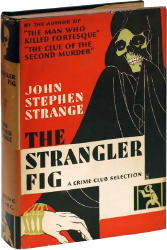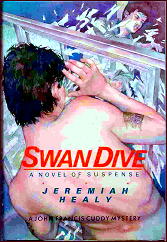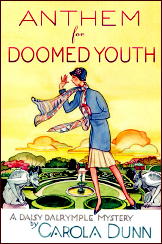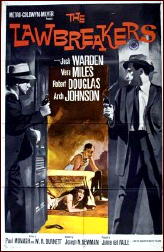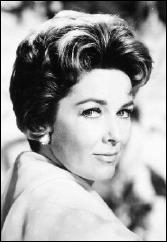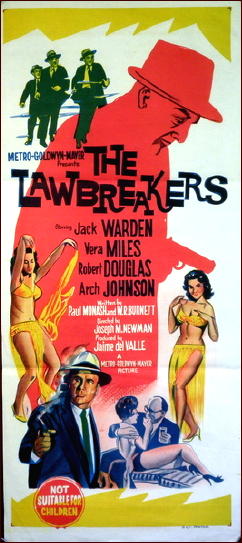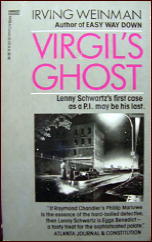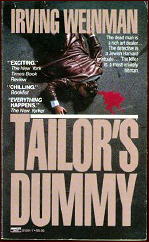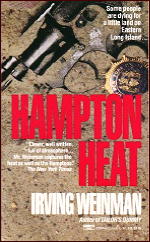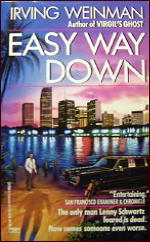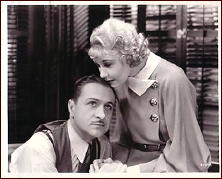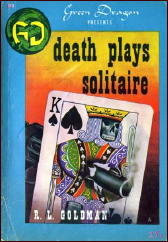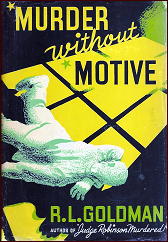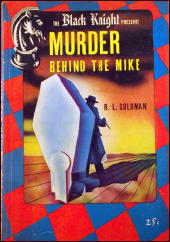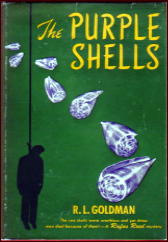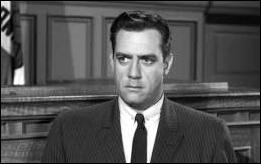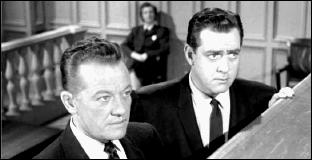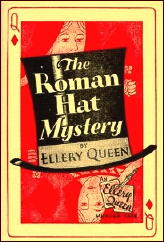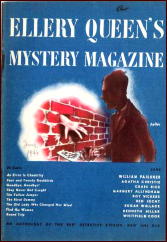Reviewed by Michael Shonk
I DEAL IN DANGER. 20th Century Fox, 1966. Compiled from the first four episodes of the TV series Blue Light. Robert Goulet, Christine Carère, Horst Frank, Donald Harron, Werner Peters, Eva Pflug, John van Dreelan. Written by Larry Cohen. Produced by Buck Houghton. Directed and Executive Produced by Walter Grauman.
For those who visit here just to read the articles and reviews, but don’t read the comments, you are missing out on half the fun. Why it is like buying Playboy just to read the articles and ignore the pictures!
During the comments for my original look at the TV series Blue Light, David Bushman of the Paley Center mentioned a detailed look at the series in Television Chronicles, featuring interviews with Larry Cohen and Walter Grauman.
Randy Cox was kind enough to send me a copy. I had originally updated the comments for the original Blue Light review, but thought an update and review of the movie made from the first four TV series episodes might be of some interest.
It began with Walter Grauman:
“I was a World War II veteran, a pilot in World War II in Europe, and flew B-25 bombers, and I was always fascinated with the war. I don’t know what gave me the idea, I don’t remember at this point, and I don’t know why I liked the title Blue Light. I just did.â€
Cohen wrote a screenplay for the Mirisch company (Return of the Seven) and was at the Walter Mirisch’s office when he met Grauman, who was close friends with Mirisch. They started to discuss ideas for a TV series. Grauman mentioned his idea for WWII spies and the title Blue Light. It was Cohen who then came up with the format of an American turncoat who goes to Germany, poses as a Nazi sympathizer who broadcasts against the Allies, but was really a double agent.
There were discussions about the title. Cohen at one time suggested the title 13 Rue Madeleine after the Fox movie with James Cagney. But in the end it was decided to keep the title Blue Light.
Walter Grauman and Robert Goulet were represented by the same agency, CMA. As Grauman explained, “When Bill Self, then the head of Fox was interested in the show, CMA said, ‘Look, we can package it with a name’…â€
William Self liked the idea and the star, and he sold it to ABC.
Cohen added that Goulet had a development fund to have scripts written for him to star. It was Goulet’s company that paid Cohen to write the pilot script. Everyone, including ABC, liked the script. ABC was so pleased with the script they bought the series, a seventeen episode commitment, before the pilot was even filmed.
The first episode, despite a trade paper critic’s raves about the on location shooting, was shot in Los Angeles. The filming in Germany began with the next episode.
Larry Cohen remained in Los Angeles and at the Fox studio lot, while Walter Grauman headed up the film company to film in Germany. Cohen explained why he did not go to Germany. It was Christmas time and Cohen did not want to leave his family.
[As a brief aside, notice the speed this was made. Shooting began in December and first episode aired January 12th.]
Cohen described the writing process for the series, “So, I started the show, and I wrote most of the stories. I wrote outlines for all the stories in the show and gave them out to writers for the writers to write the scripts, but it turned out that most of the scripts weren’t very good, and I ended up having to rewrite them anyway. So it got down to finally just writing all of the scripts myself. Some of them I credited to friends of mine, people I wanted to give a job to.â€
Cohen was having fun wandering the Fox lot and more important to him, “because everything I wrote they shot.†There was no time to change the scripts.
Walter Grauman also fondly remembers the series, but he was having much less fun. Shooting in Germany gave the series a realistic and unique look compared to the other series on the air. But there were production problems. While the Germany crew was good, art director Rolf Zehetbauer would later win an Oscar for Cabaret, they were slower than Hollywood crews.
Grauman explained his problem, “There were two executives at Fox, and one on the show. … They had a ball in Germany. I was shooting 17, 18, hours a day, and Larry was writing the scripts here and sending them (to us). There was no fax in that day, so we just got them by air (mail).
“We started in midseason, and I was falling behind. With each show I’d fall maybe two days, a day behind, and I could see that what was going to happen was that we were going to get to a point where we wouldn’t make our air date.
“I wanted to bring the company back, that was the primary reason, plus the fact that I was exhausted and couldn’t keep doing one show after another. But the guys that were there, the Fox representatives, they loved having the production over there because it was a playground for them.â€
Finally Grauman sent a cable to William Self of Fox saying that he would bring the company home or come home without them. The next day the Blue Light company was headed back to Los Angeles.
The article praised the acting ability of Robert Goulet. Cohen, whom more than once called Goulet a very nice guy, said, “…I guess he was just too good looking for the audience to get past the good looks to the person behind it and all…But he was a good actor. I thought he acted the part well.â€
The character of Suzanne Duchard was mentioned in passing and nothing was said about the actress Christine Carère.
There was an unexpected problem caused by one of the guest cast when everyone involved with the series received a health warning from the Health Department. Werner Peters (Heinrich Elm (“The Last Man†and “Return of Elmâ€) had tuberculosis and would die from the disease.
The ratings were never good. ABC tried the series in other time slots and changed the opening at least three times, but nothing worked and the show was cancelled after its order of 17 episodes.
The article also discusses I Deal in Danger.
Bill Groves wrote, “In the 50s and 60s, it was not uncommon for half-hour TV episodes to be thus edited together as features and make the rounds of the drive-in circuit, and the practice is still utilized today (1996) to some extent for foreign release.
Larry Cohen explained, “It was my idea when I wrote them to be able to put four shows together and make a feature. I told them, ‘Let me write four shows continuous, and that way you can make a feature picture out of them for syndication or for Europe or something.’ I didn’t realize they were going to release the picture theatrically in America, which they did. It actually played on a double-feature with a James Garner movie in New York called Mister Buddwing, and we were the second feature. It played all over New York. I was surprised. And the audience was a little pissed off, too, because some people came out of the theaters saying, ‘Hey, we saw this on television.’…â€
So how was I Deal in Danger? It has the look and budget of the The Man from U.N.C.L.E. theatrical films also put together from TV episodes. I Deal with Danger was more seamless than the usual such attempt and is worth watching on DVD.
Cohen’s attempt to write four half hour episodes and turn it into an hour and thirty-three minute movie was more noticeable when it aired as half hour episodes than as a movie. When I watched the series I wondered if this was an early arc series where each story lead into the next. I also wonder if Blue Light lost viewers who agree with those today who prefer their stand-alone episodic series versus the time investment that is required for a multi-part series.
The movie version is edited from the first four episodes (“The Last Man,†“Target David March,†“The Fortress Below,†and “The Weapon Withinâ€). Most notably missing was the main plot of “Target David March†where a British officer decides on his own to send in three Commandos to assassinate March. It was not missed.
Until the series is available, I Deal with Danger is a worthy substitute.
Source:
Television Chronicles: Issue 5 (April 1996). Rubber Chicken Publication. Managing Editor/Writer: Bill Groves. Publisher: Donovan Brandt.
